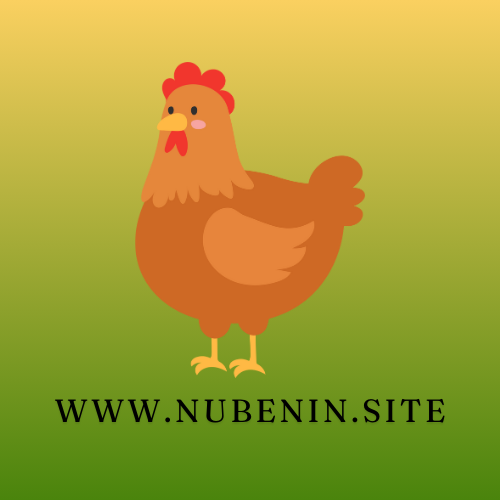Discover the best practices for changing nests for Isa Brown (French) hens and the suitable materials to use for their nesting areas.
Importance of Providing Suitable Nests for Isa Brown (French) Hens
Isa Brown (French) hens are known for their excellent egg-laying abilities, and providing suitable nests for them is crucial for their well-being and productivity. Suitable nests provide a comfortable and safe environment for the hens to lay their eggs, reducing stress and the likelihood of egg breakage. This, in turn, leads to higher egg production and better quality eggs. Additionally, suitable nests help to encourage natural nesting behaviors in hens, promoting their overall welfare and happiness.
Benefits of Suitable Nests for Isa Brown (French) Hens
1. Reduced Stress: Suitable nests provide a quiet and secluded space for hens to lay their eggs, reducing stress and anxiety levels.
2. Improved Egg Quality: Proper nesting areas help to prevent egg breakage and contamination, resulting in higher quality eggs for consumption or sale.
3. Natural Nesting Behaviors: Providing suitable nests encourages hens to exhibit natural nesting behaviors, leading to better overall welfare and mental stimulation.
Overall, providing suitable nests for Isa Brown (French) hens is essential for their well-being, egg production, and overall happiness. By creating a comfortable and safe environment for them to lay their eggs, you can ensure that your hens are healthy, productive, and content.
How Often to Change Nests for Isa Brown (French) Hens?
Isa Brown (French) hens are known for their egg-laying abilities, and providing them with clean and comfortable nesting areas is essential for their well-being and egg production. The frequency of changing nests for Isa Brown hens depends on various factors such as the number of hens, the cleanliness of the nesting material, and the overall condition of the nesting area. In general, it is recommended to change the nests for Isa Brown hens at least once a week to ensure a clean and hygienic environment for egg-laying.
Factors to Consider
When determining how often to change nests for Isa Brown hens, it is important to consider the number of hens sharing the nesting area. If there are a larger number of hens using the same nesting boxes, the nests may need to be changed more frequently to prevent the buildup of waste and bacteria. Additionally, the cleanliness of the nesting material should be regularly monitored, and any soiled or dirty bedding should be promptly replaced to maintain a healthy environment for the hens.
It is also important to observe the overall condition of the nesting area and nesting boxes. If the nesting material is consistently soiled or wet, or if there is a buildup of droppings or feathers, it may be necessary to change the nests more frequently. Regular cleaning and maintenance of the nesting area can help prevent health issues and encourage consistent egg production from Isa Brown hens.
Suitable Materials for Making Nests for Isa Brown (French) Hens
Isa Brown (French) hens require comfortable and secure nests for laying their eggs. When choosing materials for making nests, it is important to consider the comfort and safety of the hens, as well as the ease of cleaning and maintenance. Suitable materials for making nests for Isa Brown hens include:
1. Straw or Hay
Straw or hay is a popular choice for nesting material for Isa Brown hens. It provides a soft and comfortable bed for the hens to lay their eggs, and it is also easy to clean and replace when necessary. Additionally, straw or hay helps to insulate the eggs and keep them warm, which is important for successful incubation.
2. Wood Shavings
Wood shavings are another suitable material for making nests for Isa Brown hens. They provide a soft and cozy bedding for the hens to lay their eggs, and they are also easy to clean and maintain. Wood shavings are absorbent and help to keep the nests dry, which is important for the health of the hens and the successful incubation of the eggs.
Using suitable materials for making nests for Isa Brown hens is essential for ensuring their comfort, safety, and the successful incubation of their eggs. By providing a cozy and secure nesting environment, you can help to promote the well-being of your hens and encourage healthy egg production.
Conclusion
In conclusion, the process of verifying that you are human by completing a specific action is essential for maintaining online security and preventing automated bots from accessing sensitive information. By implementing these verification methods, websites and online platforms can ensure that only real users are able to access certain features and information. This helps to protect against fraudulent activities and maintain the integrity of online interactions.
Enhanced Security Measures
Furthermore, the use of human verification actions also contributes to enhanced security measures across the digital landscape. By requiring users to complete specific tasks that are difficult for automated bots to replicate, websites and online platforms can effectively reduce the risk of unauthorized access and potential data breaches. This ultimately helps to create a safer and more secure online environment for all users.
Improved User Experience
Additionally, while human verification actions may seem like an inconvenience at times, they ultimately contribute to an improved user experience. By ensuring that only real users are able to access certain features and information, websites and online platforms can maintain the quality and reliability of their services. This helps to build trust and confidence among users, ultimately leading to a more positive and secure online experience for everyone.
In conclusion, the frequency of changing nesting boxes for Isa Brown (French) hens should be every 1-2 weeks, and suitable materials for nesting boxes include straw, hay, and wood shavings. Providing a clean and comfortable nesting environment is crucial for the health and productivity of the hens.



